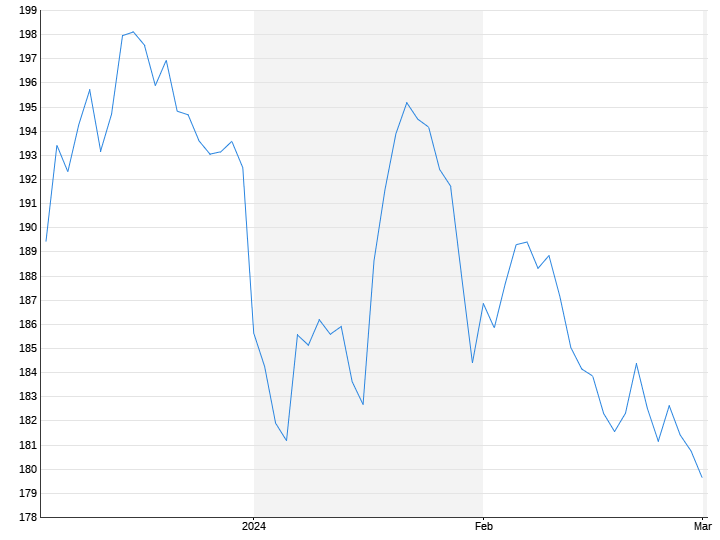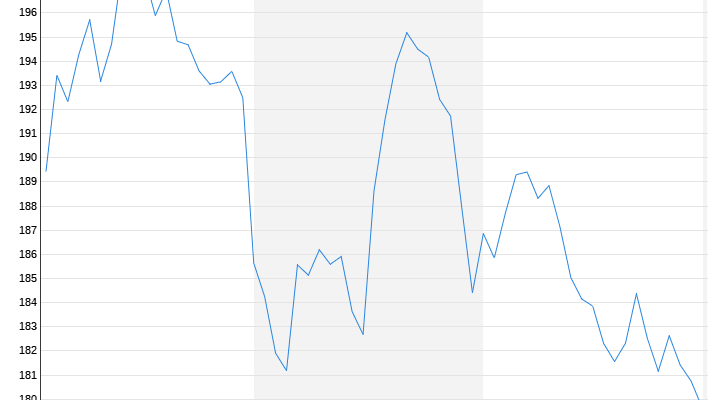Billions sunk
Why is Apple burying its car plans?
By Lutz Meier
March 2, 2024, 7:00 a.m
Listen to article
This audio version was artificially generated. More info | Send feedback
After more than a decade and billions in investments, Apple is pulling the plug on autonomous electric vehicle development. The Californian company still has an influence on the established auto industry.
When Apple ventures into a new business area, it is perceived as a kind of accolade. As a signal: There is really money to be made here. But also as a warning to the established providers in this business area: you have to dress warmly, because Apple is coming and will sweep you away like they once swept Nokia away.

But what does it mean in this context if the Californian iPhone company withdraws from a business area? On Wednesday it was announced that Apple is finishing work on its car project. The billions of investments that the company has invested in plans for an autonomous and electrically powered vehicle for over ten years will probably be largely written off. Hundreds of employees who worked on Apple’s “Project Titan” will have to reorient themselves: some of them will reportedly move to Apple’s generative artificial intelligence unit. More will therefore be released.
The Apple car project was primarily in the context of the euphoria for autonomous driving. In the early years of Project Titan, there was a lot of talk in California about a kind of rolling living room that Apple was planning – without a steering wheel, accelerator or brake pedal. Numerous service providers such as Uber and Lyft, tech companies such as Google with its subsidiary Waymo, but also traditional car companies such as GM with its subsidiary Cruise or BMW and Mercedes with its former subsidiary FreeNow were borne out of this euphoria.
The expectation at the time was that robot cars would completely change mobility by the end of the decade at the latest and that would lead to completely new business models. But disillusionment with this robotization of driving has been spreading for several years. A widely noted warning sign was the fatal accident involving a self-driving cruise taxi in San Francisco last fall, which led California authorities to withdraw their permission for fully autonomous driving tests. The technical hurdles have proven to be much greater, which is why Apple planned to use steering wheels and brakes again at some point. Disillusionment is now likely to be the main reason for Apple’s withdrawal.
Tesla is becoming less profitable
Some people might now think that Apple’s withdrawal is also a sign that the hopes associated with the electrification of driving were also too rosy. After all, the mobility industry here has long been driven by the expectation that new, profitable business models will emerge as a result of electrification establish: car sharing, car subscriptions, driving services. Vehicle suppliers would no longer dominate the scene, but rather mobility service providers who would continually invent new services using their customer data.
From the perspective of a tech company like Apple, these could be interesting – and lucrative – businesses. But so far the development has been more conservative than predicted: the drive is changing (slowly), but not so much the fundamental patterns of car ownership, trading and maintenance. That doesn’t mean that electric driving won’t be a viable business in the long term, even if there are currently setbacks in some markets. But this means the potential return promise becomes smaller.
You can see it well in Tesla: The US electric car pioneer has fulfilled its predictions and has now penetrated into the circle of the dominant global car manufacturers. But it has also caught up with them in terms of profitability: In the fourth quarter, Tesla’s operating margin shrank to 8.2 percent: This is no longer the level of other tech companies – among which Tesla still likes to be valued – but the level of traditional ones Car manufacturers.
Even if the around 8 percent remains a snapshot: The margins have also come under pressure due to the price war between the numerous Chinese electric car manufacturers. Today it can be said that innovation in the car business (and with it the pressure to change on the established players) no longer comes primarily from Californian tech providers (not counting Tesla here), but from Chinese newcomers.
The pressure on prices and innovation comes largely from battery technology, a field in which Apple has hardly been able to build up any visible competencies. Apple’s expectations in terms of profitability are completely different anyway: the apple company is used to high double-digit margins from the business with smartphones, computers and services, often around 30 percent. Achieving this with cars is difficult, even with dream cars; Ferrari writes around 24 percent.
Cars collect data
The most important area in which Apple is likely to have hopes of getting involved in the mobility business is the connected car. The vehicle as a data collector and hub for location, entertainment, service and consumer offerings has driven not only Google but also Apple into the car business. The calculation goes that whoever masters the “brain” of the driving computer, which the car will soon become, can do the best business.
This bill still applies. But in order to do this business, Apple doesn’t need to develop its own hardware. Most car manufacturers have long since concluded extensive contracts with Google and/or Apple. Many have central software functions supplied by tech companies. Apple CarPlay and Google’s counterpart Android Auto are almost standard in today’s cars – this means that the tech companies have at least partial access to car users’ customer relationships and mobility data. The ambition of car manufacturers like Volkswagen and Mercedes, who originally announced that they wanted to completely control the software of their vehicles themselves in the future, has long since become noticeably weaker.
What does Apple’s withdrawal mean for the traditional (German) car manufacturers? Not as much. The plans of Apple or US tech newcomers in the automotive world (except Tesla) are no longer the things that have to cause them the biggest headaches. The big challenges for them come from Tesla, Chinese electric car manufacturers, Asian battery manufacturers and special chip producers. In this sense, time had already passed over Apple’s car project.
